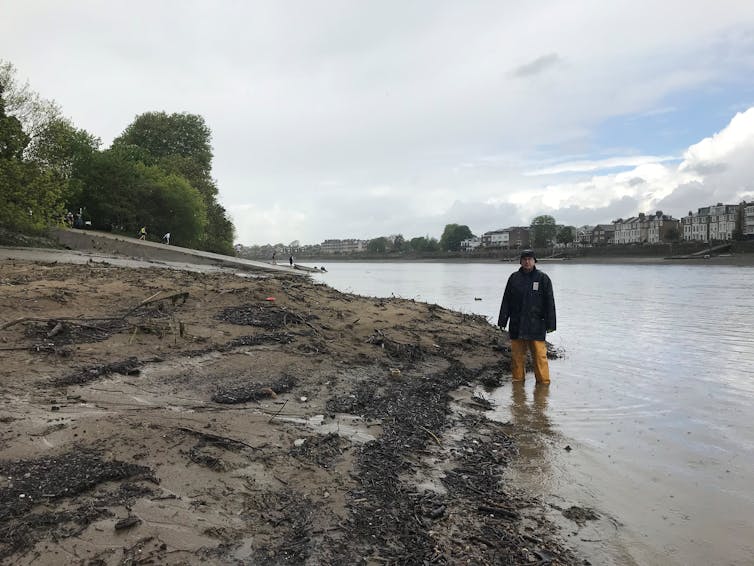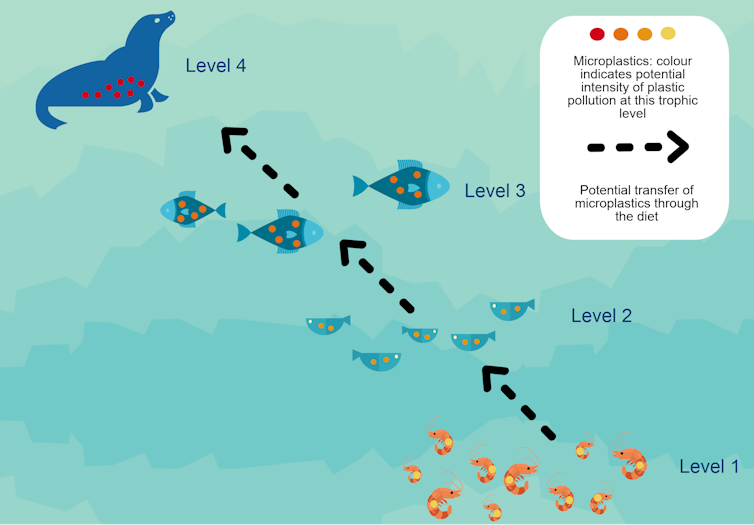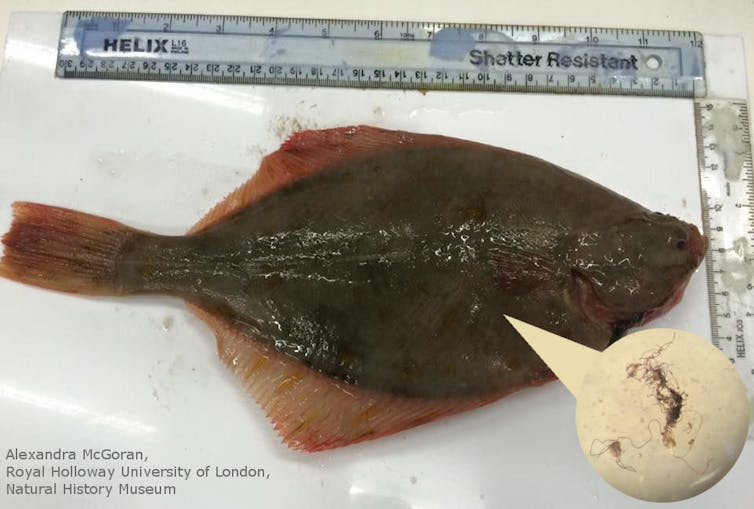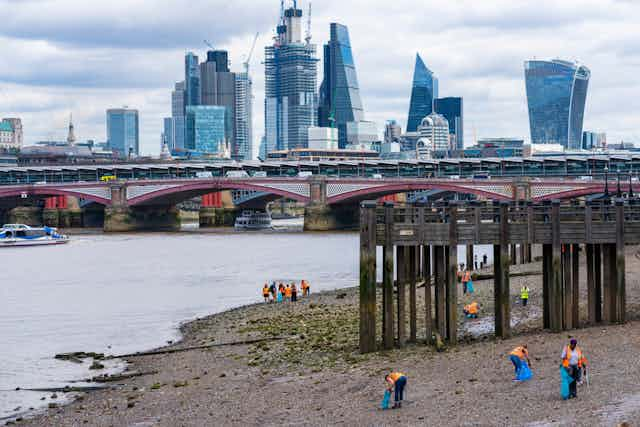Ever since the issue was highlighted in shows like “Blue Planet 2”, plastic pollution in the world’s oceans has generated a wave of concern among the public. It might surprise people to learn that despite comparably less attention, many of the world’s rivers are just as polluted, if not more so.
Around 80% of marine litter starts on land and rivers help transport it out to sea. In this way, plastic pollution is not just a problem for the distant open ocean – it’s an issue on our doorstep. For this reason, I chose to focus on the River Thames and the impact that plastics are having close to home.
There are currently no estimates for the amount of plastic in the Thames, but the world’s rivers are estimated to carry up to 4,000 kg of plastic out to sea every day. Despite much of the plastic in the Thames making it to the North Sea, a portion is permanently accumulating in the catchment.

Researchers recovered nearly 8,500 items from the Thames riverbed over three months in 2012. After 20 river cleans on the foreshore of the Thames in 2019, nearly 9,000 plastic items were recovered, almost all of which were single-use.
These were most often wet wipes, sanitary products and food packaging, which accumulate in the sediment or are deposited on the inside of bends in the river. Several members of our lab group helped with a cleanup with local environment charity Thames21. On the Thames foreshore at Hammersmith in early 2019, 23,000 wipes were collected, averaging 201 wipes per square metre. You may have heard of wet wipes forming “fatbergs” in sewers, but on the banks of the Thames there are wet wipe reefs that are slowly changing the shape of the river itself.

As plastics move through the aquatic environment they break up. Eventually, these particles reach a microscopic scale. I have been researching microplastics, which are items smaller than 5 mm – roughly the size of a grain of rice – since 2015 and every study I have undertaken has found plastic. I have studied two UK rivers, the Thames and the Clyde, and fish in both estuaries have ingested plastic.
A river of plastic
As part of my PhD, I’m researching the accumulation of microplastics in the Thames food web. When I trawl in the Thames for fish the nets are full of plastic, especially tangles of wet wipes. It’s extremely rare that we bring in a net with no litter at all.
Despite its murky appearance, the Thames is a diverse ecosystem that’s full of life. It supports over 120 species of fish as well as many marine mammals, such as grey seals, common seals, dolphins and porpoises. Even a beluga whale was once spotted. Microplastics in the river can be ingested by all animals in the food web. Negative impacts on one part of this system can potentially cause a cascade which affects other species.

Microplastics contain chemical additives which are released as they degrade and can act as harmful pollutants in water. These toxic chemicals can be transferred to organisms if they ingest them. This forces the animal to use their energy to treat the problem, rather than growing, feeding or reproducing.
The amount of plastic in an animal’s gut is likely to increase higher up the food web that the animal feeds. If amphipods near the base of the foodweb ingest a few pieces of plastic then fish eating large numbers of amphipods – each likely to contain small amounts of plastic – would gradually accumulate more as they feed. Then seals at the top of the foodweb, which ingest lots of fish, would be exposed to a greater concentration still.
Though plastic straws and other single-use items have taken much of the blame, the plastic most commonly eaten by flatfish – a species often caught by fishers – are fibres. These are long threads of plastic which originate in our fabrics. Straws may flow out to sea quicker but during my research in the Thames, I found that 80% of all plastic extracted from animals there were fibres.

Hundreds of thousands of these tiny plastic fibres can drain into rivers with every use of our washing machines. Wastewater treatment plants catch the majority of these fibres, but with so many people washing their clothes in the Thames catchment area, a vast number of fibres are still entering the river and making their way out to sea.
Washing clothes less often and using products designed to capture fibres in the wash can prevent them getting to rivers or the sea, such as the guppy friend bag and coraball. We may rightly fret about the impact of our plastic on life in the ocean, but it’s time we realised that the plastic pollution crisis is a lot closer to home than we care to think.

